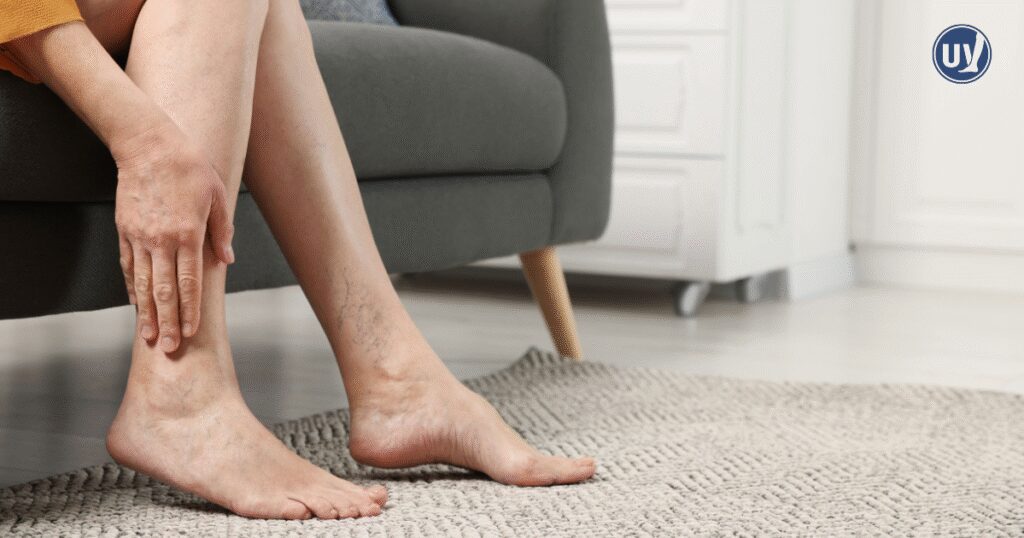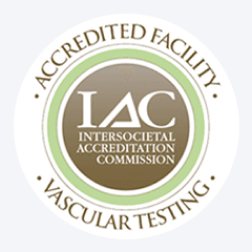If left untreated, varicose veins can sometimes cause aching, swelling, and fatigue that disrupt your daily life. If you’ve been searching for a solution that’s effective but doesn’t require surgery, you may want to consider VenaSeal®, one of today’s most innovative treatments.
Unlike traditional methods that rely on heat or multiple injections, VenaSeal uses a medical adhesive to gently seal diseased veins shut. The result? A minimally invasive procedure that’s quick, virtually pain-free, and allows most patients to return to normal activities the very same day.
But is VenaSeal right for you? The answer depends on your symptoms, your vein health, and your overall goals for treatment. In this article, we’ll break down who makes a good candidate, how the procedure works, and what you can expect from recovery, so you can feel confident exploring your options.
The VenaSeal Treatment Process: What to Expect
VenaSeal is designed to treat varicose veins efficiently. The procedure is cutting-edge, using a specialized adhesive. This medical adhesive seals the problematic veins from the inside.
The process begins with a vein specialist assessing your condition. An ultrasound guides the procedure for precision and effectiveness. The adhesive is then delivered through a small catheter.
VenaSeal stands out because it doesn’t require heat or incisions. This makes it less invasive than traditional surgeries, like vein stripping. Thermal treatments are also avoided, reducing the risks associated with heat.
One of the greatest advantages of VenaSeal is comfort. Patients often report minimal to no pain during and after the procedure. Additionally, the recovery is swift without the need for compression stockings.
This innovative approach underscores advancements in vein care. By closing off the affected veins, VenaSeal reroutes blood through healthier veins. This effectively reduces symptoms and improves the vein’s appearance.
Who Are the Best Candidates for VenaSeal?
Identifying the right candidates for VenaSeal is crucial for successful outcomes. This treatment is often recommended for individuals with symptomatic varicose veins. Symptoms typically include leg pain, swelling, and visible veins that affect daily life.
Those who prefer a non-thermal, non-tumescent solution may find VenaSeal appealing. It offers a less invasive alternative to traditional surgeries or thermal ablation. Moreover, VenaSeal is suitable for those seeking quick recovery.
A thorough evaluation by a vein specialist is essential. This ensures that the treatment is tailored to your specific needs. The specialist will review your medical history to rule out contraindications.
It’s important to note that VenaSeal may not suit everyone. Individuals with certain allergies or medical conditions may not qualify. These conditions could potentially interfere with the procedure’s success or safety.
Additionally, VenaSeal might not be the best choice for those seeking only cosmetic benefits. It’s designed to address the underlying problem of venous insufficiency. Understanding all your options is key to making an informed decision.
Discussing your symptoms and treatment goals with a healthcare provider is vital. This conversation will help determine if VenaSeal aligns with your expectations. You deserve the best possible care tailored to your needs.
Symptoms and Conditions Treated by VenaSeal
VenaSeal primarily addresses the issues caused by varicose veins. These veins develop due to venous insufficiency, which can lead to discomfort.
For many, varicose veins are not merely a cosmetic issue. They can significantly impair daily activities and quality of life. Individuals may experience throbbing pain that worsens after long periods of standing.
Patients often seek treatment when these symptoms become unmanageable. Untreated, they can lead to more severe complications over time. Skin changes and ulcers are potential consequences of prolonged venous insufficiency.
VenaSeal offers relief by sealing the affected veins. This allows healthy veins to reroute blood flow effectively. Consequently, it alleviates symptoms and improves overall leg health. The procedure can be life-changing, bringing comfort and mobility back to those affected.
Benefits of VenaSeal Compared to Other Treatments
VenaSeal offers numerous advantages over traditional treatments for varicose veins. One major benefit is its minimally invasive nature. Unlike other methods, it doesn’t require surgical incisions or sutures, which significantly reduces recovery time.
Another advantage is the absence of compression stockings post-procedure. Many traditional treatments require wearing these stockings, which can be uncomfortable for some patients. VenaSeal eliminates this need, allowing for greater comfort.

The procedure is also non-thermal and non-tumescent, unlike thermal ablation treatments. This means there’s no risk of nerve injury from heat or tumescent anesthesia. Patients who prefer a gentler approach often choose VenaSeal.
Recovery and Aftercare Following VenaSeal
The recovery process after VenaSeal is remarkably swift. Most patients can resume normal activities almost immediately. This is largely due to the minimally invasive nature of the procedure.
Unlike other vein treatments, VenaSeal doesn’t require wearing compression stockings after the procedure. This benefit adds to the convenience and comfort for many patients. It’s important to follow the specialist’s advice to ensure the best outcome.
Regular follow-up is crucial to monitor healing and effectiveness. This ensures the best results and swift recovery. Most patients experience minimal discomfort and find the VenaSeal aftercare simple and straightforward.
Potential Risks, Side Effects, and Recurrence
VenaSeal is considered safe, but like any procedure, it carries some risks. Understanding these can help ease any concerns. Most side effects are mild and temporary.
Some patients might experience minor bruising or irritation at the injection site. These side effects typically resolve on their own. It’s essential to follow your specialist’s advice for any discomfort.
While recurrence is rare, it’s not impossible. Follow-up appointments help monitor for any signs of returning symptoms. Discuss any concerns with your healthcare provider.
Here are some potential risks to be aware of:
- Minor bruising or phlebitis
- Localized irritation or swelling
- Low risk of complications with proper aftercare
Is VenaSeal Right for You? Making an Informed Decision
Deciding if VenaSeal is the right option requires careful consideration. Each patient’s situation is unique. Discussing personal goals with a vein specialist is vital.
An informed decision should account for personal medical history and lifestyle. Being aware of possible outcomes and expectations is equally important. Candid discussions with healthcare providers can clarify concerns.
Consultation and Comprehensive Vein Care
The most important step in your vein care journey is scheduling a consultation with a vein specialist. This initial visit allows for a thorough evaluation of your vein health, including a physical exam and review of your medical history.
From there, your provider will confirm whether VenaSeal is the right fit for you and outline a personalized treatment plan.
Taking this comprehensive approach ensures your treatment not only addresses your immediate symptoms but also supports your overall vein health for the future.
Frequently Asked Questions
You may be a good candidate if you have symptomatic varicose veins causing pain, swelling, heaviness, or fatigue in the legs. A vein specialist will perform an ultrasound and medical evaluation to confirm whether VenaSeal is right for you.
Unlike thermal treatments that use heat or injections, VenaSeal uses a medical adhesive to seal the vein shut. This means no need for tumescent anesthesia, minimal discomfort, and a quicker recovery time.
Most patients resume normal daily activities within 24 hours. Since the procedure doesn’t involve heat or large incisions, downtime is significantly shorter compared to traditional treatments.


